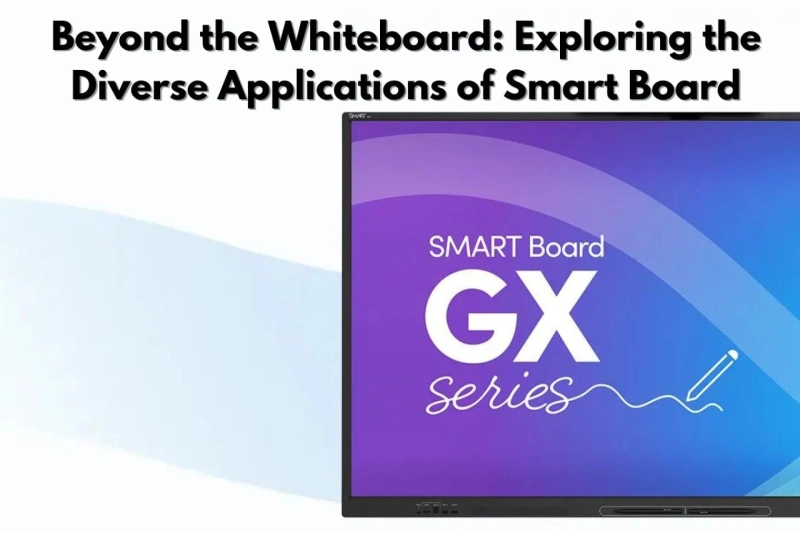Introduction:
Smart Board technology, initially introduced as an enhancement to traditional whiteboards, has transcended its initial role to become a versatile tool with diverse applications across various industries. This article delves into the myriad uses of Smart Board technology, going beyond the conventional classroom setting to explore how it is transforming collaboration, presentations, and problem-solving in numerous fields.
I. Transforming Business Meetings:
Smart Boards have become integral to modern business meetings, replacing traditional whiteboards and flip charts. Their interactive and digital capabilities allow for dynamic presentations, real-time collaboration, and efficient note-taking. In corporate settings, teams use Smart Boards to brainstorm ideas, analyze data, and outline strategies. With the ability to connect to other devices and cloud services, Smart Boards facilitate seamless collaboration, enabling participants to contribute regardless of their physical location.
II. Facilitating Dynamic Presentations:
Smart Board technology redefines the art of presentations, making them more engaging and interactive. Presenters can navigate through slides, annotate content, and incorporate multimedia elements with the touch of a finger. This interactivity not only captures the audience's attention but also encourages participation and discussion. In educational institutions, businesses, and conference rooms, Smart Boards have become a preferred tool for delivering compelling and memorable presentations.
III. Enhancing Training and Workshops:
The versatility of Smart Boards extends to training sessions and workshops. Trainers can create interactive modules, conduct virtual simulations, and facilitate hands-on learning experiences. Whether in academic institutions or corporate training rooms, Smart Boards provide a dynamic platform for disseminating information and fostering active engagement. This technology is particularly valuable in fields that require practical training, such as healthcare simulations, technical skills development, and creative workshops.
IV. Collaborative Problem-Solving:
Smart Boards facilitate collaborative problem-solving sessions by allowing multiple participants to contribute ideas simultaneously. Teams can collectively analyze data, strategize, and visualize solutions in real time. The interactive nature of Smart Boards encourages creative thinking and ensures that every participant has a voice in the decision-making process. This collaborative approach is beneficial across various sectors, from research and development to project management and problem-solving in critical situations.
V. Interactive Museum Exhibits and Public Spaces:
The application of Smart Board technology extends to public spaces, enhancing the visitor experience in museums, galleries, and information centers. Interactive exhibits on Smart Boards provide an immersive learning environment, allowing visitors to explore content, delve into historical timelines, and interact with multimedia displays. This technology transforms passive observation into active engagement, making learning more accessible and enjoyable for diverse audiences.
Also Read: What’s Next for Smart Board Technologies in Education?
VI. Medical Training and Patient Education:
In the healthcare sector, Smart Boards have found valuable applications in medical training and patient education. Medical professionals use interactive displays to illustrate complex medical concepts, showcase surgical procedures, and discuss treatment options with patients. Smart Boards facilitate clearer communication and understanding, bridging the gap between medical experts and individuals seeking healthcare information.
VII. Dynamic Visualizations in Science and Research:
In scientific research and academia, Smart Board technology aids in dynamic visualizations and data analysis. Researchers use interactive displays to present complex findings, conduct virtual experiments, and collaborate on interdisciplinary projects. The ability to manipulate data in real time enhances the understanding of intricate scientific concepts and promotes collaborative research efforts.
Conclusion:
Beyond the traditional whiteboard, Smart Board technology has become a transformative force in various fields. Its diverse applications, ranging from business meetings and presentations to healthcare and scientific research, showcase the adaptability and versatility of this interactive tool. As technology continues to advance, Smart Boards will likely play an increasingly pivotal role in fostering collaboration, engagement, and innovation across different industries, reshaping the way we work, learn, and interact.


